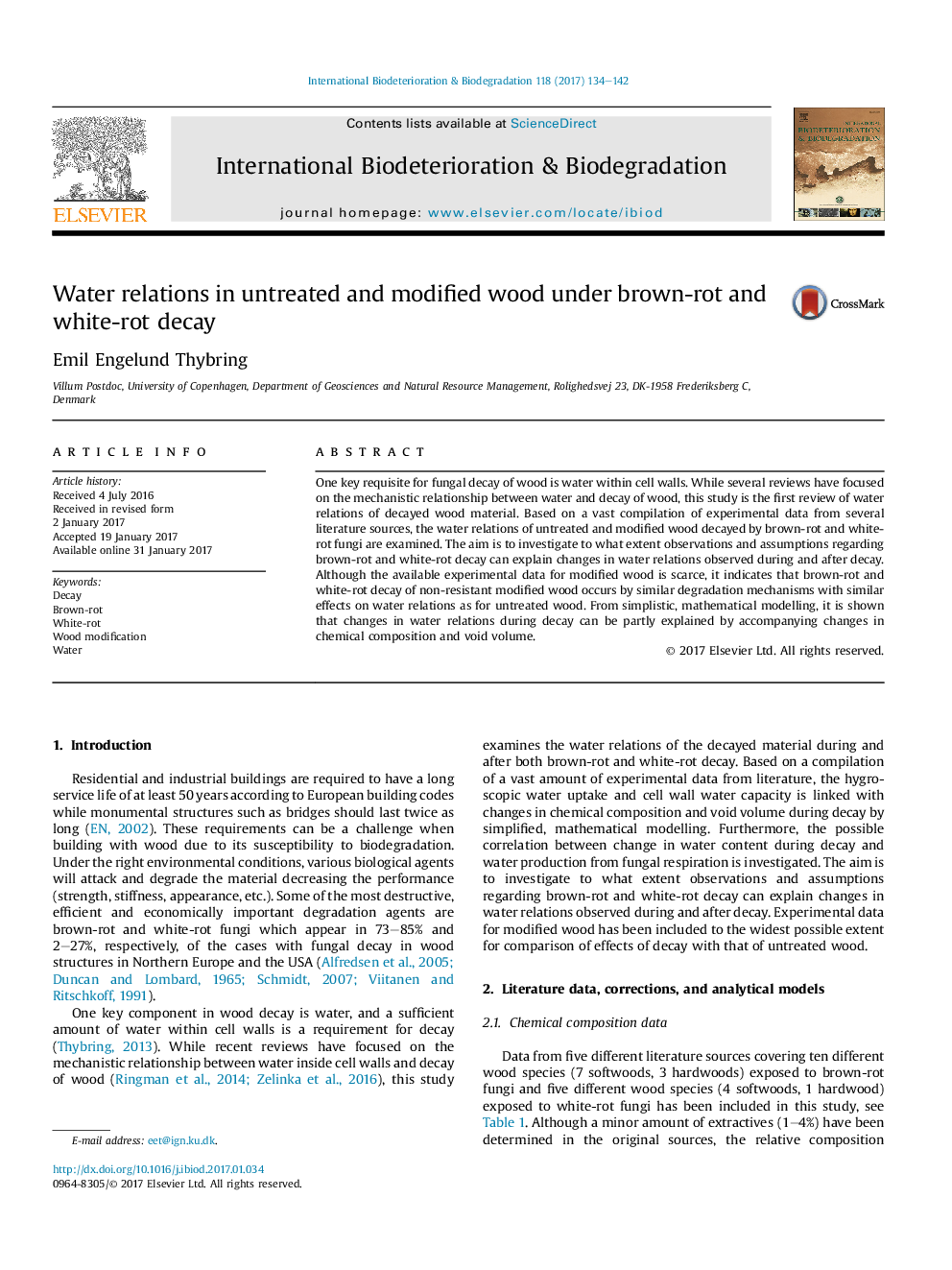| کد مقاله | کد نشریه | سال انتشار | مقاله انگلیسی | نسخه تمام متن |
|---|---|---|---|---|
| 5740548 | 1616299 | 2017 | 9 صفحه PDF | دانلود رایگان |
- Water uptake in hygroscopic and saturated states of decayed untreated and modified wood is studied using literature data.
- Changes in hygroscopic water uptake in decayed wood can be partly explained by changes in chemical composition.
- Changes in saturation cell wall water content in decayed wood can be explained by changes in void volume.
- Degradation mechanisms involved in decay affect water relations for untreated and modified wood similarly.
One key requisite for fungal decay of wood is water within cell walls. While several reviews have focused on the mechanistic relationship between water and decay of wood, this study is the first review of water relations of decayed wood material. Based on a vast compilation of experimental data from several literature sources, the water relations of untreated and modified wood decayed by brown-rot and white-rot fungi are examined. The aim is to investigate to what extent observations and assumptions regarding brown-rot and white-rot decay can explain changes in water relations observed during and after decay. Although the available experimental data for modified wood is scarce, it indicates that brown-rot and white-rot decay of non-resistant modified wood occurs by similar degradation mechanisms with similar effects on water relations as for untreated wood. From simplistic, mathematical modelling, it is shown that changes in water relations during decay can be partly explained by accompanying changes in chemical composition and void volume.
Journal: International Biodeterioration & Biodegradation - Volume 118, March 2017, Pages 134-142
